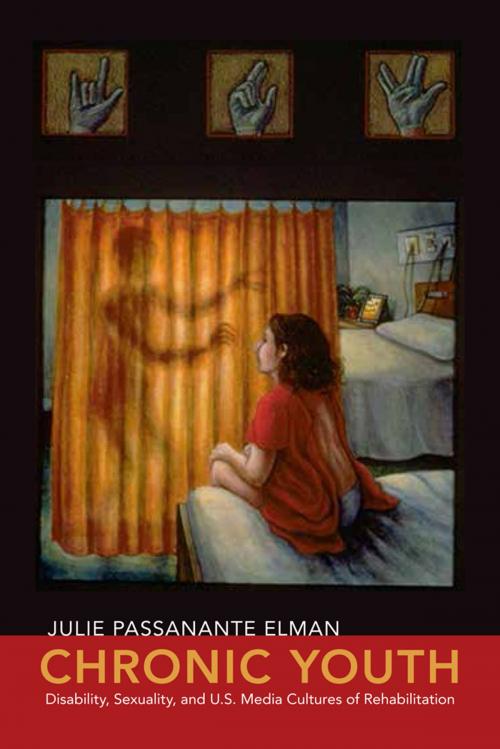Chronic Youth
Disability, Sexuality, and U.S. Media Cultures of Rehabilitation
Nonfiction, Reference & Language, Law, Media & the Law, Social & Cultural Studies, Social Science, Gender Studies| Author: | Julie Passanante Elman | ISBN: | 9781479841103 |
| Publisher: | NYU Press | Publication: | October 20, 2014 |
| Imprint: | NYU Press | Language: | English |
| Author: | Julie Passanante Elman |
| ISBN: | 9781479841103 |
| Publisher: | NYU Press |
| Publication: | October 20, 2014 |
| Imprint: | NYU Press |
| Language: | English |
The teenager has often appeared in culture as an anxious figure,
the repository for American dreams and worst nightmares, at once on the brink
of success and imminent failure. Spotlighting the “troubled teen” as a site of
pop cultural, medical, and governmental intervention, Chronic Youth
traces the teenager as a figure through which broad threats to the normative
order have been negotiated and contained.
Examining television, popular novels, science journalism, new
media, and public policy, Julie Passanante Elman shows how the teenager became
a cultural touchstone for shifting notions of able-bodiedness,
heteronormativity, and neoliberalism in the late twentieth century. By the late
1970s, media industries as well as policymakers began developing new problem-driven
‘edutainment’ prominently featuring narratives of disability—from the
immunocompromised The Boy in the Plastic Bubble to ABC’s After School
Specials and teen sick-lit. Although this conjoining of disability
and adolescence began as a storytelling convention, disability became much more
than a metaphor as the process of medicalizing adolescence intensified by the
1990s, with parenting books containing neuro-scientific warnings about the
incomplete and volatile “teen brain.” Undertaking a cultural history of youth
that combines disability, queer, feminist, and comparative media studies, Elman
offers a provocative new account of how American cultural producers,
policymakers, and medical professionals have mobilized discourses of disability
to cast adolescence as a treatable “condition.” By tracing the teen’s uneven
passage from postwar rebel to 21st century patient, Chronic Youth shows
how teenagers became a lynchpin for a culture of perpetual rehabilitation and
neoliberal governmentality.
The teenager has often appeared in culture as an anxious figure,
the repository for American dreams and worst nightmares, at once on the brink
of success and imminent failure. Spotlighting the “troubled teen” as a site of
pop cultural, medical, and governmental intervention, Chronic Youth
traces the teenager as a figure through which broad threats to the normative
order have been negotiated and contained.
Examining television, popular novels, science journalism, new
media, and public policy, Julie Passanante Elman shows how the teenager became
a cultural touchstone for shifting notions of able-bodiedness,
heteronormativity, and neoliberalism in the late twentieth century. By the late
1970s, media industries as well as policymakers began developing new problem-driven
‘edutainment’ prominently featuring narratives of disability—from the
immunocompromised The Boy in the Plastic Bubble to ABC’s After School
Specials and teen sick-lit. Although this conjoining of disability
and adolescence began as a storytelling convention, disability became much more
than a metaphor as the process of medicalizing adolescence intensified by the
1990s, with parenting books containing neuro-scientific warnings about the
incomplete and volatile “teen brain.” Undertaking a cultural history of youth
that combines disability, queer, feminist, and comparative media studies, Elman
offers a provocative new account of how American cultural producers,
policymakers, and medical professionals have mobilized discourses of disability
to cast adolescence as a treatable “condition.” By tracing the teen’s uneven
passage from postwar rebel to 21st century patient, Chronic Youth shows
how teenagers became a lynchpin for a culture of perpetual rehabilitation and
neoliberal governmentality.















